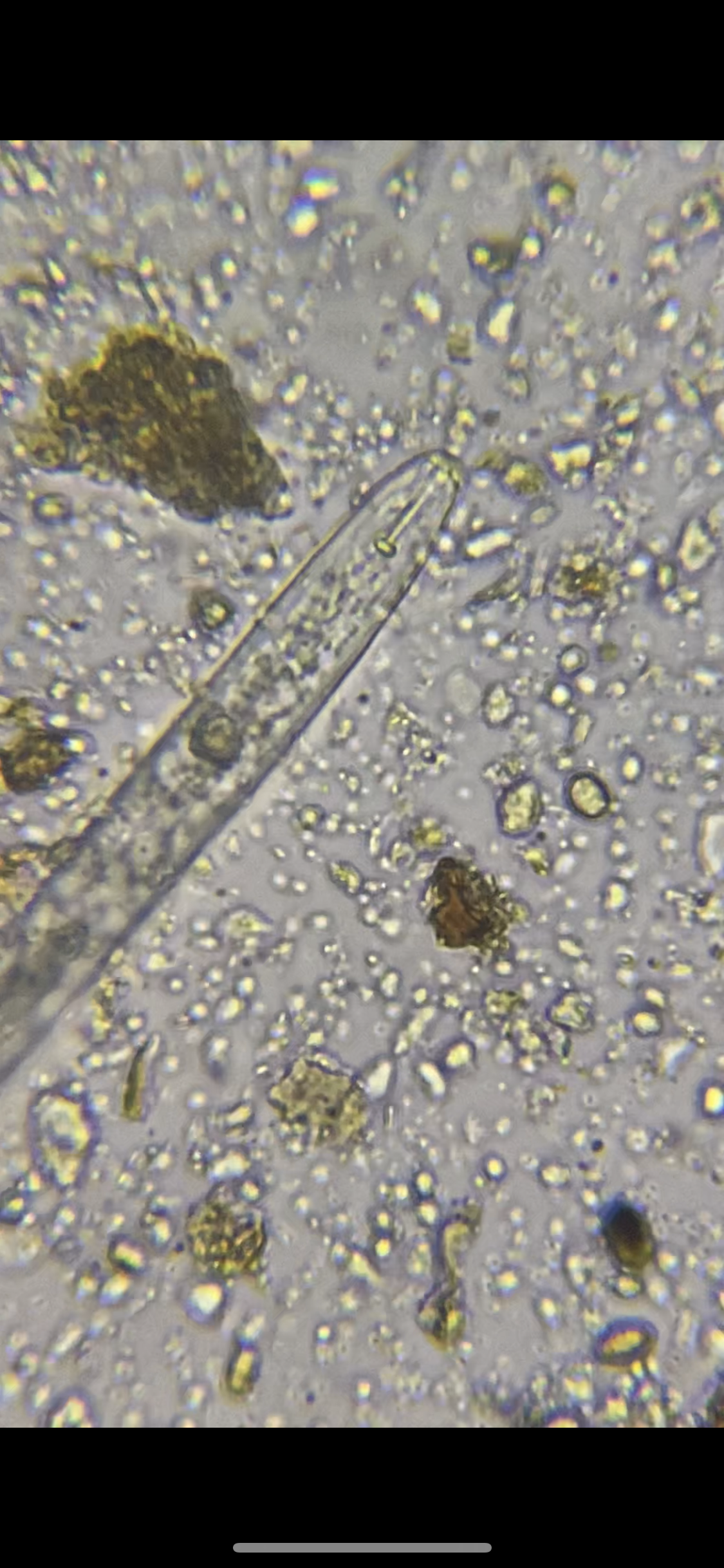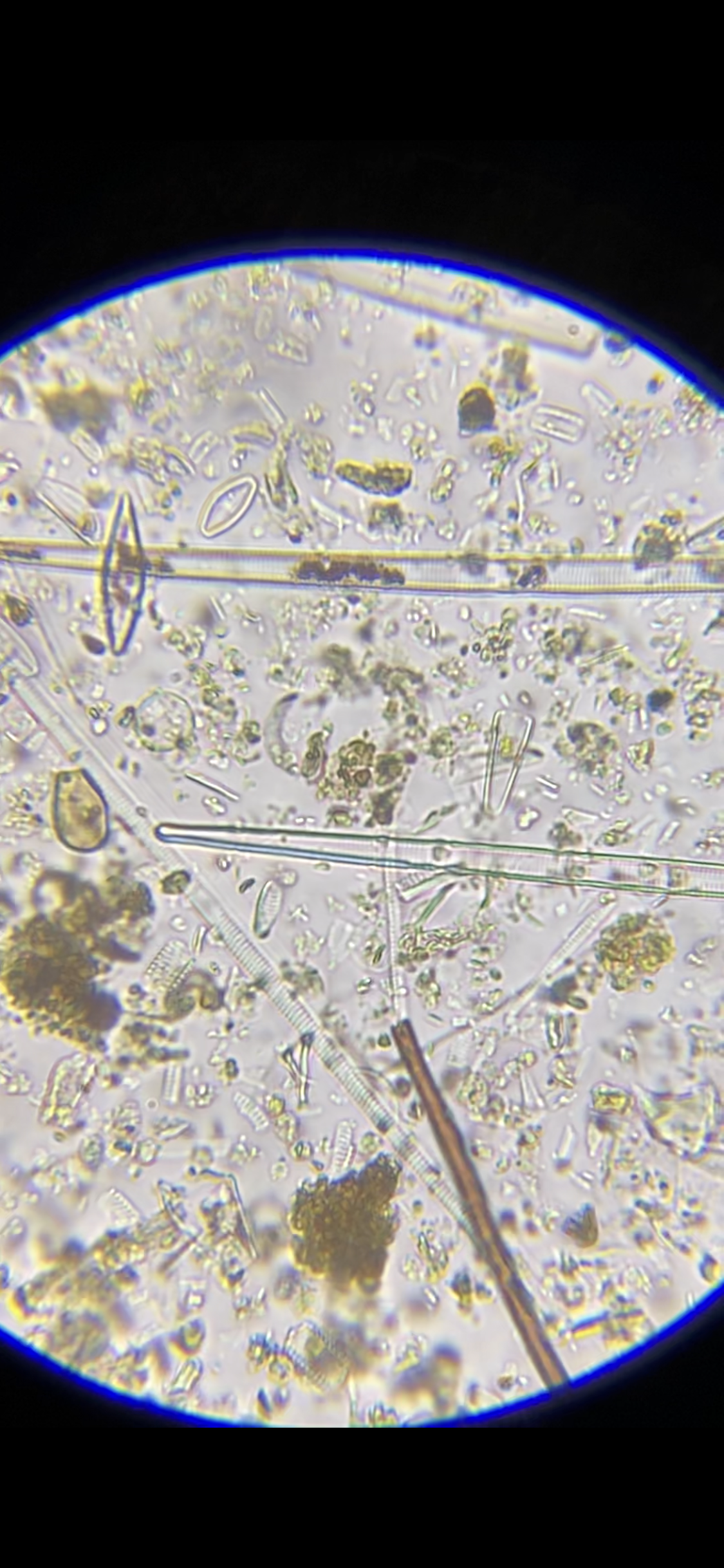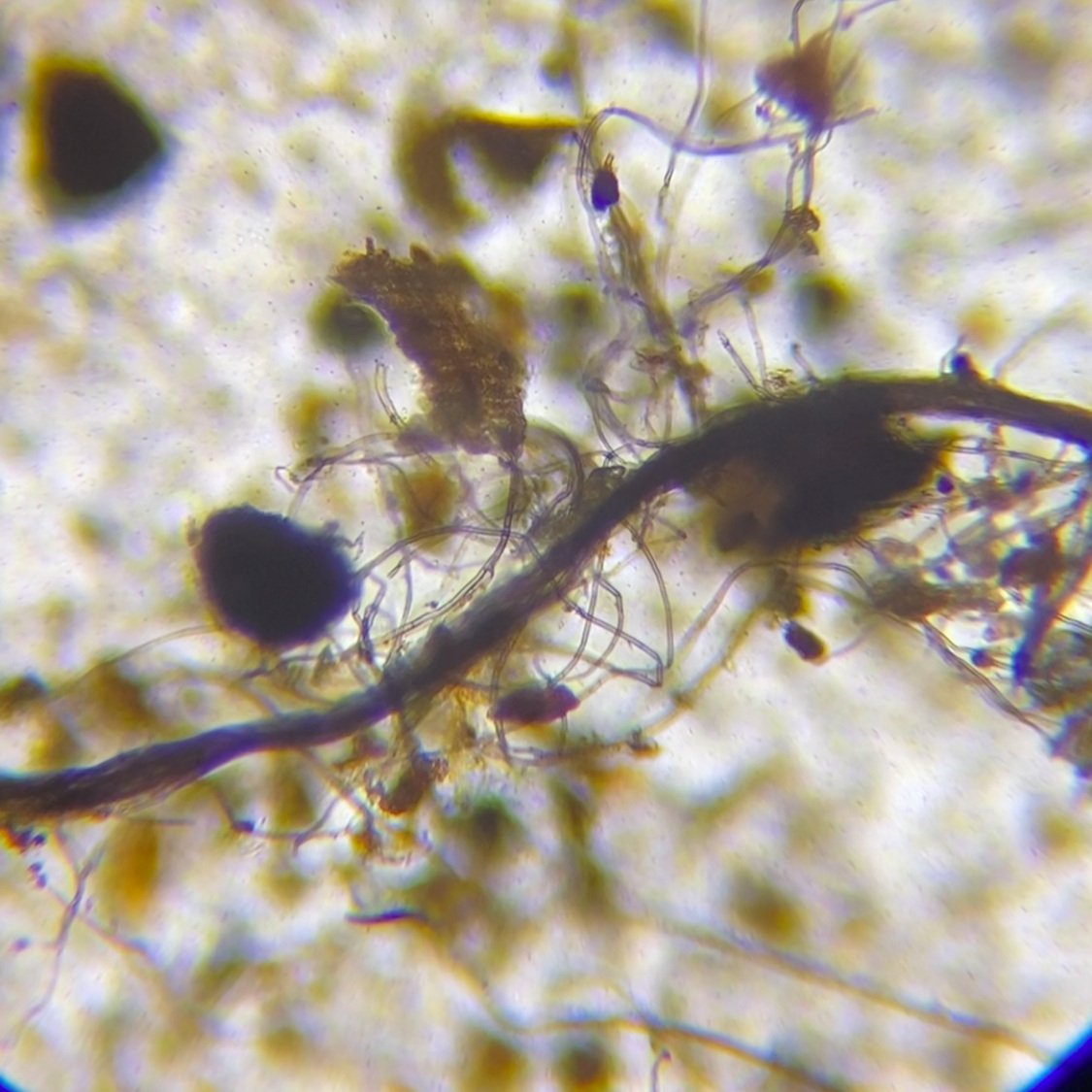
Why is it important to understand the biology in your soil?
Due to modern agriculture and other unsustainable human activities we are losing fertile soils at alarming rates, and when we talk about soil degradation what is really being lost is the presence of biology especially the microbial life. Modern agriculture depicts the soil as dead inert matter, but in reality soils are teaming with life! A tablespoon of healthy soil should contain more organisms than there are people on earth. Plants send about 50% of the products made through photosynthesis to the rhizosphere in order to attract microorganisms. Plants spend this enormous amount of energy on microorganisms because they are co-evolutionary partners, which benefit the plant and the environment in astounding ways:
Soil Fertility
The presence of microbial diversity in our soils is integral to maintaining soil fertility. Bacteria and fungi are constantly breaking down organic matter and soil particles creating nutrients and humic acid. When higher trophic level organisms such as protozoa and nematodes consume the bacteria or fungi they will release waste that is in plant available forms. Plants even have the ability to intake bacteria directly into their roots and use them as a resource of nutrients in a process called rhizophagy.
Nutrient Acquisition
Microorganisms form complex relationships with plants providing nutrients, and protection from pests and disease. Mycorrhizal fungi specifically are critical to nutrient acquisition in plants. These amazing fungi work symbiotically with plants to support healthy growth. Mycorrhizal fungi are able to mine water and nutrients from the soil and exchange those products for plant exudates. It is estimated that 80% of all plant species form mycorrhizal relationships.
Soil Structure
Microorganisms also provide to soil with good structure. Bacteria and fungi form aggergates which create pore spaces within the soil. With these organisms present in the soil it acts like a sponge which absorbs and holds water preventing drought stress. Water is allowed to run through the soil carbon filter where microorganisms pull out and neutralize toxins and pollutants, which provides clean water to the underground aquifers. This soil structure eliminates compaction, erosion, and run off.
Nutrient Cycling
In Nature everything happens in cycles; there is no waste because everything is recycled by microorganisms. When a plant or animal dies it is the responsibility of microorganisms to break it down and turn it into fertile humus. In this process, death becomes fertile ground for new life to emerge.
Nutrient cycling also happens on a microscopic level. Bacteria the most nutrient dense organism on the planet, having a carbon to nitrogen ratio of 5:1. Protozoa are microscopic direct predators of bacteria and eat as many as 10,000 per day. When these protozoa consume bacteria they release waste products that are in plant available form. For this reason it is very beneficial for plant growth to have plentiful protozoa in your soil.
In your biological analysis I will check for these predators such as protozoa and nematodes to ensure microscopic nutrient cycling is happening in the rhizosphere. If I do not see protozoan I will provide you with ways to specifically culture protozoa in compost teas to increase the amount of protozoa in your soil or compost.
Soil Microscopy Analysis Includes:
Quantitative Report
Using microscopy I will assess the microbiology in your soil or compost sample. The data sheet will provide you with a biomass per gram of soil for bacteria, fungi, and actinobacteria along with the fungal to bacteria ratio. It will also indicate the number of protozoan per gram of soil including a breakdown of flagellates, amoeba, cilliates. The report also includes a count of nematodes per gram of soil including bacteria feeding, fungal feeding, root feeding, and predatory nematodes. I will provide you with an explanation of the data results.
Qualitative Report
One of the most imporant aspects of determining the quality of a soil or compost is the diversity of species present. Looking only at the quantity of organisms will not give you a full picture of the microbial communities present in the sample. The qualitative report will give you a complete look into your compost. I will assess the quality of your sample based on the diversity of microorganism species present. I will share with you visual examples by creating a google drive folder that includes pictures and videos of microorganisms observed in the sample.
Remediation Recommendations
Based off my findings I will provide you with ways to improve or maintain the biological health in the soil. If the compost is lacking microbial diversity or an imbalance is found, I will share ways to culture biological inoculants that will add the missing organisms to the system. I will also recommend techniques to improve the overall quality of your soil or compost.
Nematode Extraction
Sometimes nematodes can be tricky to find track down in a sample. As a standard I observe a minimum of 5 samples from each soil or compost specimen. If nematodes are not found in any of the 5 samples I will recommend that a nematode extraction be preformed. This extraction method will pull all the nematodes from the specimen. From there it can be determined if nematodes are present and if so what types of nematodes are present including bacteria feeding, fungal feeding, root feeding, and predatory nematodes. You can also request that a nematode extraction be preformed with your sample to give you a better idea of the quantity and diversity of nematodes present.
Fungal to Bacteria Ratio
All plants fall somewhere within ecological succession. As ecosystems have evolved they have become more complex and biodiverse. After a massive disturbance like a fire or clear cutting the biological clock is set back in time. Early successional species of plants (which are commonly referred to as weeds) will begin to grow and lay the groundwork for biodiverse communities to emerge once again. Common weeds like dandilions, pruslane, lambsquarter, and ragweed are very nutrient dense they pull up extra nutients from the soil. As these weeds die microorganisms will break them down as they begin building up fertile humus.
The amount of fungi in our soil is correlated with its stage in succession. For example, Old growth forests have F:B ratios around 300:1 while environments where weeds thrive have a F:B ratio of as little as 0.1:1. Most agricultural crops and lawn grasses thrive in a soil that has a balanced 1:1 F:B ratio, while fruit trees prefer 5:1 F:B ratio
A handful of healthy soil can contain up to 26 miles of fungal hyphae. However, the over use of tillage and biotoxic pesticides and fertilizer has drastically decreased the amount of fungi in our soils. These agricultural practices also set the biological clock back in time creating the perfect environment for weeds to grow.
Understanding the F:B ratio in your soil will help improve the growth of your crops or landscape while reducing problematic weeds. If the F:B ratio in your report is not appropriate for your plants, I can provide you with ways to increase the amount of fungi in your soil.






Contact
Please fill out the inquiry below and provide a detailed description of your project include any questions, and ideas. I look forward to connecting!


